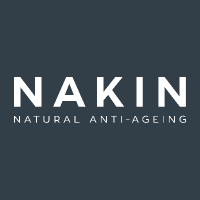Do I Need to Wear SPF in Spring?

One of the most anti-ageing products that there is will be applying SPF to our face when needed, as the sun can be so damaging to our skin. We know though that many of us only tend to get the SPF out in summer, but we actually need it much more than this and this includes in the springtime. The springtime can have some hot sunshine days, often where it feels like summer, so likewise our skin needs to be protected from this.
At Nakin we do not produce SPF but we do have a full collection of anti-ageing face products. We are not going to advise exactly where and when to apply SPF as this will depend on the product directions. the weather on the day and personal circumstances, and ensuring we are not vitamin D deficient. We are not experts on SPF application and what is best regarded this, but we do want to encourage everyone to wear SPF when needed.
Why You Need to Wear SPF in Spring
Spring is a season of renewal, bringing longer days and warmer weather, but it also means increased sun exposure. While the temperatures may feel milder compared to summer, the sun's UV rays can still cause significant damage to your skin. UV radiation is present year-round, and during spring, the tilt of the Earth allows for stronger sun rays, making it essential to protect your skin. Wearing SPF when needed helps to prevent sunburn, premature ageing, and reduces the risk of skin cancer. Additionally, UV rays can penetrate clouds, so even on overcast days, your skin remains vulnerable. Incorporating SPF into your routine is a simple yet effective step to maintain healthy, protected skin.
Sun protection is not just about preventing sunburn or avoiding a painful and uncomfortable experience. It goes beyond that - protecting your skin from damaging UV rays is crucial for maintaining healthy, youthful-looking skin and reducing the risk of skin cancer.
UV rays can cause immediate damage to our skin such as sunburn, uneven pigmentation, and premature ageing. But they also have long-term effects that may not be visible right away. Prolonged and repeated exposure to UV radiation can lead to more severe consequences such as DNA damage, mutations in cells, and a weakened immune system.
Skin cancer is by far the most common form of cancer globally, with an estimated 5.4 million cases diagnosed each year. The main cause of skin cancer is UV radiation from the sun or tanning beds. This is why it is crucial to protect our skin from UV rays, not only for cosmetic reasons but also for our overall health.
One way to protect ourselves from UV rays is by using sunscreen. Sunscreen works by either absorbing or reflecting the sun's harmful UV rays, preventing them from penetrating and damaging our skin. However, not all sunscreens are created equal. It is usually advised to choose a broad-spectrum sunscreen with an SPF (sun protection factor) of at least 30.
Another way to protect ourselves from UV radiation is by seeking shade when possible. This can be in the form of an umbrella, a hat, or simply finding a shaded area to sit in. It is especially important to seek shade during peak hours when the sun's rays are strongest, typically between 10 AM and 4 PM.
Wearing protective clothing can also help shield us from UV radiation. This includes long-sleeved shirts, pants, and wide-brimmed hats that cover our face and neck. Some clothing even comes with UPF (ultraviolet protection factor) labels, which indicate how much UV radiation can pass through the fabric.


Leave a comment